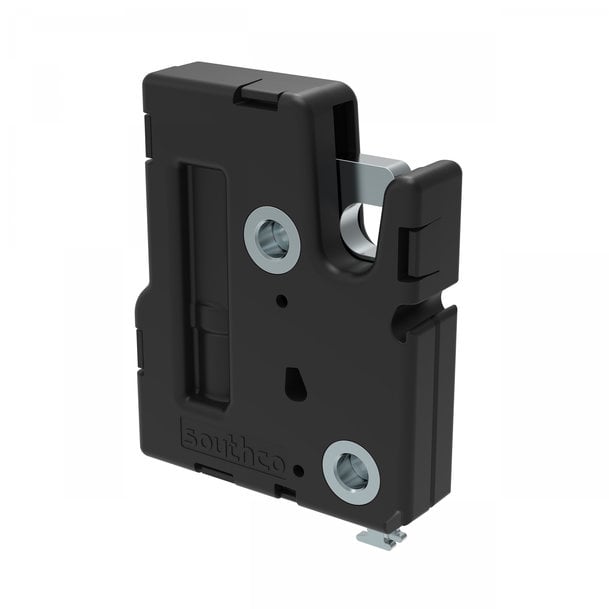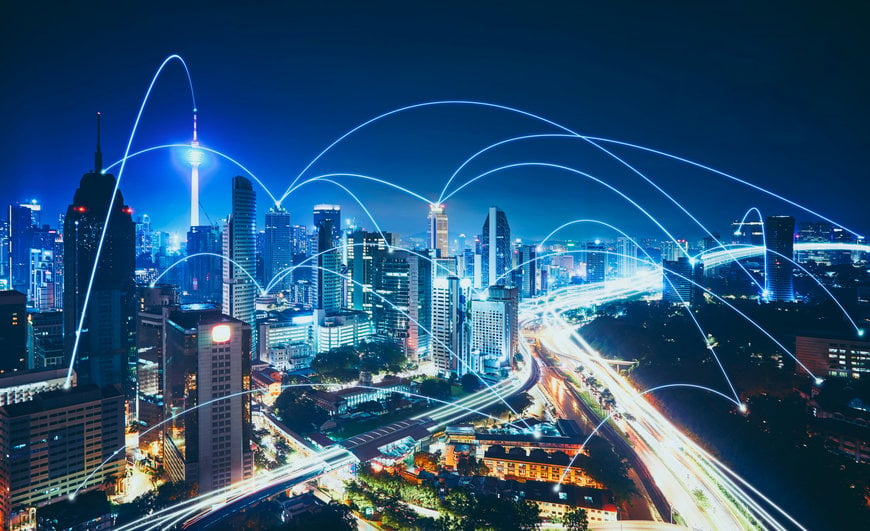www.industryemea.com
12
'21
Written on Modified on
THE SMART CHOICE: SELECTING HARDWARE TO EMBRACE THE SMART CITY MOVEMENT
By Mark Yarnall, Business Development Manager, Diversified Technologies, Southco Inc

Our cities have always been places where new technologies are rapidly adopted and deployed to enable new modes of living, working and social interaction. The rise of advanced digital devices and communications tools, growth in electric vehicle (EV) use and ecommerce home delivery — all these factors are driving the creation of the “smart city.”
These growing smart cities need engineered equipment and infrastructure to support the transformation. The arrival of advanced technologies like 5G and the exponential growth predicted for applications such as smart lighting, electric vehicle charging and city bike rental schemes is inviting industrial designers to consider a new mix of design challenges.
As this new technology is deployed, there is a need for well-designed and secure enclosures to protect the equipment. These enclosures must be effectively and seamlessly integrated into existing urban environments, and they must be regularly accessed by both technical personnel and the general public. Access needs to be highly secure and well managed, yet at the same time easy to use and cleanly integrated into the built environment.
There are a range of best practices that can be followed for adding engineered access hardware to smart city equipment and infrastructure, including the role that usability, security and longevity of this equipment plays in the design process. Selecting the right hardware can enhance this equipment, as well as the competitive value of enclosure technologies.

5G drives smart city growth
One of the most significant smart city drivers is the rapid deployment of a 5G communications infrastructure. 5G provides data transfer rates many times faster than prior platforms, significant reduction of latency, high bandwidth and greater opportunities for connectivity and reliability.
5G cells are much smaller, with dimensions that make attaching them to walls and streetlamp poles — or even integrating them into the poles themselves — the most common method expected when positioning this equipment. There are even designs that will mount 5G network components on the underside of manhole covers.
With the introduction of 5G, networking equipment and other valuable infrastructures are now located closer to the end user, so the need for advanced physical security to protect this infrastructure is crucial.
Nevertheless, industrial designers need to be equally aware of ways to incorporate access systems cleanly into enclosures so that they seamless merge into our built cityscapes, through the use of hidden hinges and elegantly designed latches that complement industrial design.
Environmental hardening is also important; latches designed with compression can ensure that access panels are tightly sealed to protect against weather-related damage.
Electronic access solutions (EAS) also provide enhanced physical security for 5G enclosures. An electronic access solution is composed of three primary components: an access control or input device, an electromechanical lock and a system for monitoring the status of the access point.
EAS platforms offer security with a range of price points and design features. The most basic form is a simple RFID credential, used by many telecom service providers and contractors.
The most secure access credential — which is gaining widespread use — supplies an electronic, time-based key via a mobile app on a technician’s smartphone. The technician actuates the electronic lock via a secure Bluetooth connection. An audit trail is established through cloud-based access controllers so that the network operator knows exactly who accessed the cell site, for how long and what work was completed.
This kind of secure, traceable access is vital for protecting and sustaining the growth of 5G systems. Electronic access control is cost-effective in the long run because it keeps this expensive equipment safe from harm and theft. It also represents one example of how engineered access technology can leverage the expansion of connectivity that is inherent to the vision for smart city design.
Smart lighting transforms the streetlight
Connectivity and digital technology, combined with LEDs, are rapidly changing the common streetlight. Municipalities worldwide are replacing traditional lighting fixtures with energy-saving LED fixtures. In the process, forward-looking cities are upgrading those lighting fixtures to provide a broader range of functionality than just shedding light.
Smart LED fixtures could one day be able to find a parking space, monitor air quality, guide people on emergency evacuation routes and capture a wealth of traffic data to manage vehicle flow, reduce traffic jams and help improve the environment.
Lighting manufacturers are seeking to provide more advanced lighting poles and fixtures for these streetlights, incorporating digital controllers so they can be dimmed or brightened to save energy. The systems can also incorporate sensors and even video cameras to begin capturing a wealth of data to augment efforts by municipalities to analyze and better manage traffic and public safety.
These upgraded fixtures will need upgraded access hardware to protect the more valuable equipment that powers them. However, compared to 5G telecom equipment enclosures, there will most likely be no need for regular access to upgrade or maintain smart light fixtures.
In the past, access hardware for lighting fixtures could be simple and relatively low-cost quarter-turn fasteners combined with hidden hinges, mainly for ease of access to replace worn-out bulbs. The advent of LED lighting means that fixtures may go years without needing to be opened for this purpose. However, since the equipment in smart light fixtures is more advanced than a standard lighting fixture, latches with higher security features may be necessary to protect the investment.
For example, there are new rotary latch models offered by major access hardware manufacturers that combine smaller dimensions with highly secure latching. These latches can fit easily into smart lamp fixtures, as well as access panels in the base of streetlamps. They are designed to be hidden, so not to attract attention, yet are highly secure and provide the appropriate level of compression to keep out rain, ice and snow. In addition, they can be cost-effectively upgraded to include electronic locking features, if the end-user municipality ultimately wants to enhance the security of the fixture.

EVs and Parcel Lockers: new fixtures for the smart city
Two of the most leading-edge new fixtures that are becoming common elements in the emerging cityscape are EV charging stations and Automated Parcel Delivery Terminals for ecommerce delivery and returns.
EV charging stations will eventually become as ubiquitous as the gasoline station, with much of the same requirement: the ability for the EV driver to access the charger, connect it to their vehicle and “pay at the pump”. As well as appearing next to the traditional gas pump at gas stations, EV charging stations will find their way into parking lots, convenience stores and streetscapes.
That creates a security risk: EV charging stations contain expensive electrical equipment and have direct links to communications networks, making them targets for thieves and hackers. Since they are in unsupervised locations, EV charging station designers must carefully consider incorporating the same level of secure access hardware, including top-level electronic access solutions with audit trail capabilities, to provide the same level of protection that 5G enclosures require.
Unlike 5G enclosures, however, there is a clear trend toward designing EV charging stations to incorporate branding elements and distinctive visual designs so that EV vehicle operators can easily spot them. Electronic access solutions providers can help support this industrial design challenge with concealed locking mechanisms and hardware that help achieve marketing design goals.
The growth of intelligent parcel lockers is the result of many people — in city centers especially, but also other locations — who prefer to have their ecommerce packages left in a secure location rather than an apartment building lobby or the front steps of a town house. They also provide a convenient way to return products through the same logistics path.
This equipment requires a high level of security and audit trail tracking; however, in some cases the designs of these lockers call for very tight dimensions. Leading access hardware suppliers have been working with locker designers to create cost-effective latching systems that can incorporate electronic latching in limited spaces.
Help selecting the right access hardware
The smart city is not going to be built out in an empty field — in almost all cases the technology to make a city “smarter” will need to be retrofitted into our existing cityscapes. This is one of the most critical challenges design engineers face when creating enclosure designs and selecting access hardware to secure them.
A key source of support and creative solutions for these challenges is a proven access hardware supplier with extensive experience addressing both functional and aesthetic challenges. They can often draw on existing portfolios and design concepts to help solve these critical engineering and design challenges.
Choosing a proven supplier can be the “smart” move to ensuring that the technology infrastructure enabling the benefits of the smart city is well protected, easily accessed and intelligently woven into existing urban environments.
www.southco.com

